The Samsung Galaxy Note 10 lineup devices are one of the best flagship smartphones under the Note segment in 2019 globally. The device literally delivers almost every aspect from design to hardware to software to other features. But Samsung’s Note series smartphones always priced higher so, the affordable flagship users can’t get that easily. But not anymore. Samsung is almost ready to compete with OnePlus & Xiaomi by releasing the much affordable Samsung Galaxy Note10 Lite model with two variants which are a good sign. Here in this article, we will share with you an easy method to root your Galaxy Note 10 Lite using the Magisk app. Well, there is no need for TWRP Recovery on your device.
We will use the Magisk by patching the Stock ROM boot image file and flashing it to the device boot partition. The Galaxy Note 10 Lite device comes with variants like SM-N770F/DS (Global). To root your Galaxy Note 10 Lite, you need to download the required firmware as per your device build number, and then patch the boot image using the Magisk app. To do that, you can simply follow our step-by-step guide.
Also Read
![How To Root Samsung Galaxy Note 10 Lite Using Magisk [No TWRP needed]](https://www.getdroidtips.com/wp-content/uploads/2020/01/Samsung-Galaxy-Note-10-Lite.jpg)
In order to root, you will require to download the patched image file from Magisk Manager and flash it. It’s worth mentioning that your Galaxy Note 10 Lite device bootloader should be unlocked at first. Without the bootloader unlocking, it’s not possible to enable root access on your phone. By rooting your handset, you will get a superuser or administrator control on your system over system apps and subsystems.
Now, head over to the device specifications and features as well.
Page Contents
Samsung Galaxy Note 10 Lite Specifications: Overview
The Galaxy Note10 Lite comes with a bigger 6.7-inches Super AMOLED 1080×2400 pixels resolution display with Always-on display, HDR, a 20:9 aspect ratio. It has the Stylus Pen that integrated with Bluetooth, accelerometer, gyroscope sensor. It’s powered by the Exynos 9810 chipset that paired with Mali-G72 MP18 GPU. It runs on Android 10 over One UI 2.0 out-of-the-box. The device packs 6GB/8GB RAM, 128GB of internal storage with up to 1TB of external MicroSD card.
It sports a triple rear camera setup of 12MP (wide, f/1.7) + 12MP (telephoto, f/2.4) + 12MP (ultrawide, f/2.2) lens along with Dual Pixel PDAF, OIS, 2x optical zoom, an LED flash, HDR, Panorama mode, etc. While the front features a 32MP selfie camera (wide, f/2.2) that also supports HDR mode. The device packs a 4,500mAh battery with fast charging support.
It features Wi-Fi 802.11 a/b/g/n/ac (dual-band), Bluetooth 5.0, GPS, A-GPS, GLONASS, USB Type-C port, etc. While the device has ambient light, an accelerometer, proximity, gyro, compass sensor. It also has Samsung DeX and ANT+ support.
Also Read
Definition of Root
Smartphone Rooting is just like a jailbreaking the device to get the admin access over subsystem, system apps, the root directory of the device and more. It will give you the superuser control to use your device over an Android subsystem. After rooting a device, the user can delete, edit, or change the system files or settings easily. The rooted users can also increase or decrease the system performance, battery performance, etc.
Mostly, the rooting process will come in handy if you’re using any third-party Custom ROMs. This will increase the accessibility up to a broader extent. Though sometimes improper rooting may brick your device or void your device warranty as well (if applicable). Most commonly, people use rooting to change themes, icons, fonts, install other mod files, tweaking Android settings for visual changes, etc.
Additionally, a rooted device user can also tweak notification panel, system user interface, accent color changes, install Xposed modules, lock screen changes, widgets, camera improvements, and more.
Advantages of Rooting
- You can get access to all files on your Galaxy Note 10 Lite, even the files which present in the root directory of your phone.
- You can increase the performance of your device by overclocking.
- By rooting you can increase battery life by underclocking device.
- Install the Xposed Framework and Xposed module support.
- Uninstall Bloatware on Galaxy Note 10 Lite.
- You can block Ads on any applications like YouTube, Browser.
- By Rooting your device, you can View, Edit, or Delete any system file inside the root directory.
Also Read
Steps To Root Galaxy Note 10 Lite using Magisk
Before starting the rooting process, make sure to unlock the device bootloader at first. Then you can continue with the next steps.
Please Note:
Please Note:
- Rooting will block the official OTA updates
- After Rooting, it may void the warranty of your phone
- Supported model:
- Galaxy Note 10 Lite: SM-N770F/DS (Global)
Download Firmware
- Galaxy Note 10 Lite Firmware:
- SM-N770F: Download Here
After you have downloaded the exact firmware file based on your device model number, you can extract the boot.img file to patch it via Magisk manager app.
Guide to Extract Boot Image File and rename to .tar fileSteps to Create a Patched boot image using Magisk Manager
- First, download and install the latest Magisk Manager app.
- Next, connect your device to the PC via the USB cable.
- Copy only the boot.img file from the extracted folder to your device storage.
- Now, open the Magisk Manager app and select INSTALL and choose to install again.
- Then tap on “Patch Boot Image File”.
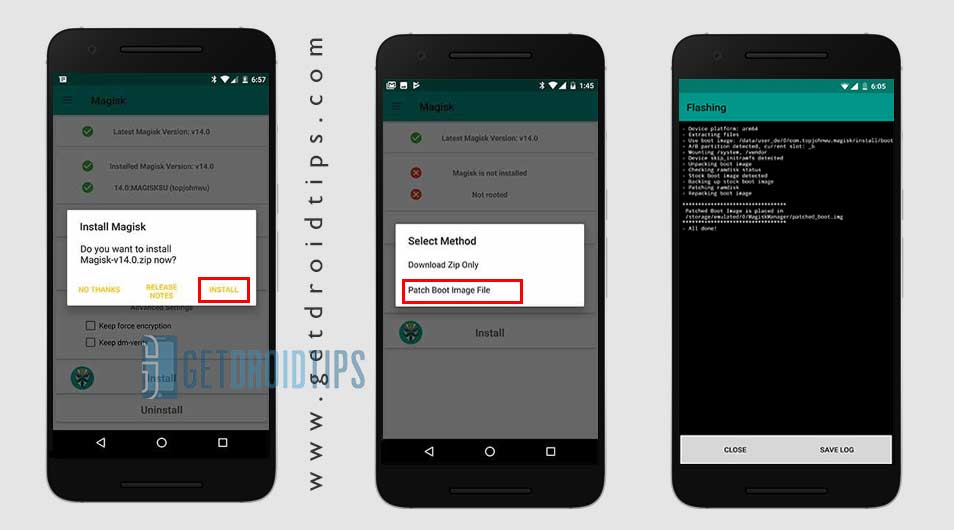
- Go to internal storage and select your device boot image that you moved earlier.
- Now, wait for Magisk to start patching the boot image.
- Once the boot image has been patched, copy the “patched_boot.img” from the internal storage and replace it in the same extracted ROM folder on your PC.
Now, follow the second step to flash the patched boot image file.
- Odin flash tool accepts files in .tar format. So, you have to use 7zip and archive it to .tar format. You can even rename the file as boot.img.tar as shown in the below screenshot.

Steps To Install the Patched Boot Image tar file on Galaxy Note 10 Lite
Now, follow the final or second method to install the patched boot image file on your Galaxy handset. But first, follow the requirements.
Pre-Requirements:
- ROM Supported for – Samsung Galaxy Note 10 Lite model only. Don’t try it on other devices.
- Keep your device battery charged up to 60% at least before doing anything.
- Take a full backup without Root of the device internal storage.
- A Windows PC or Laptop and a USB cable are required.
- Download Latest ODIN tool and install it on your computer.
- Download and Install the latest Samsung USB Drivers on your computer.
- Copy the patched boot image file into the ADB & Fastboot directory.
Instructions to Root Galaxy Note 10 Lite Using Magisk
After following the pre-requirements and unlocking the bootloader, in order to Root Galaxy Note 10 Lite Using Magisk, let’s take a look at the rooting steps.
- First, reboot your device into download mode.
- Now, connect your phone to the PC via the USB cable.
- Once you are connected, now open the downloaded ODIN.exe file.
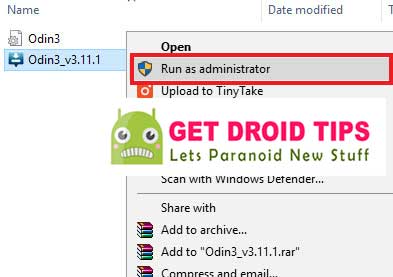
- When you connect the USB cable you will see a blue sign in Odin.
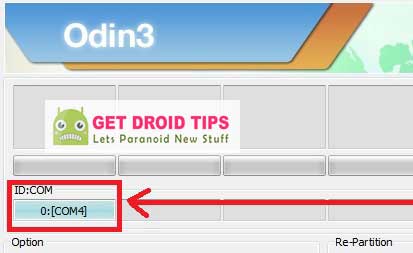
- Now, load the patched boot.tar file in the AP section.
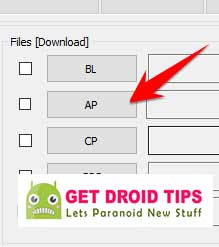
- Go to Option and see whether the Auto Reboot and F-Reset Time selected or not). If not then select these two. Don’t select re-partition.
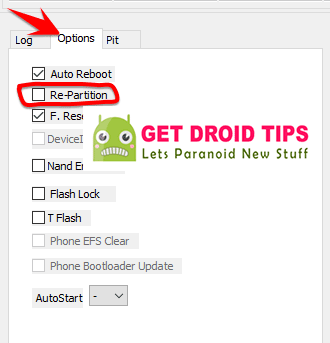
- Now, tap on the Start button to root your device.
- Your device will reboot when the process will complete.
- Then wait for a few minutes. The first boot will take some time.
- You’re done. Enjoy!
We assume this guide is really helpful to you and you have successfully rooted your Samsung Galaxy Note 10 Lite device by using Magisk. In case any issue, do let us know in the comments below.

How to unlock the bootloader of samsung galaxy note 10 lite?
Follow our video method: https://www.youtube.com/watch?v=ZCpH0SClxYw
….